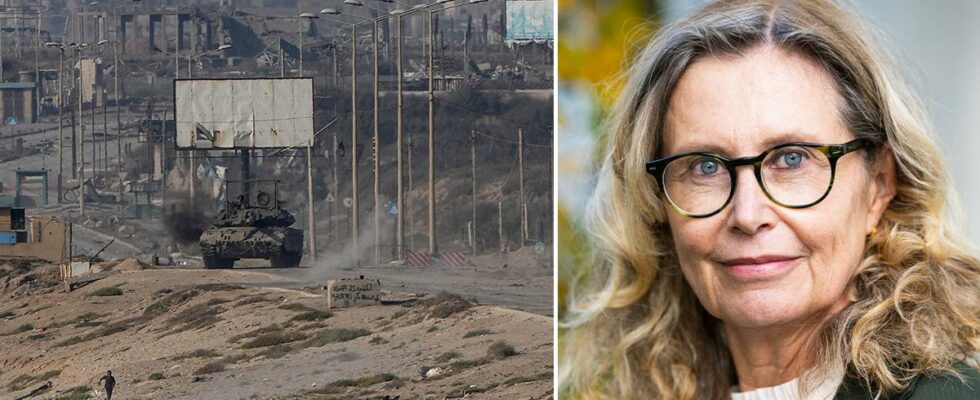unsaveSave
Yesterday, the UN Security Council voted through a resolution on a cease-fire in Gaza, which both Israel and Hamas have accepted.
In March, a similar resolution was approved – but the war continued anyway.
– The ceasefire goes completely against the current Israeli government, says expert Karin Aggestam.
ⓘ The summary is made with the support of AI tools from OpenAI and quality assured by Aftonbladet. Read our AI policy here.
Show more
chevron-down
For the second time, a resolution on a cease-fire in Gaza is approved in the UN Security Council. Of the 15 member states of the council, 14 voted in favor of the Biden administration’s resolution, only Russia abstained, thus choosing not to use its veto.
The proposal, which could theoretically end the eight-month war, has been accepted by both Israel and Hamas.
The previous attempt at a ceasefire in March not only failed, Israel’s warfare in Gaza continued – and escalated.
The resolution consists of three phases, the initial phase is about a six-week ceasefire and the release of some hostages and some of the Palestinians imprisoned in Israel.
The details of the ceasefire will have to be negotiated, which could be a challenge, says Karin Aggestam, professor and director of the Center for Middle Eastern Research at Lund University.
– But a ceasefire is urgent because the humanitarian situation is catastrophic both for the hostages and
the Palestinian civilian population who are suffering immensely.
expand-left
full screenGaza June 9. Photo: Abdel Kareem Hana / AP
Will the truce last?
Even if the first phase is completed, the second, and most challenging, permanent ceasefire remains.
Is this the end of the war?
– I would like to say that it is highly doubtful.
Karin Aggestam believes that there is much that speaks against the truce being long-term, among other things because of Hamas’s leadership and the Israeli government’s goals for the war.
– The government has several ministers who not only want to continue the war, but also want Israel to have more permanent control over the Gaza Strip, she says.
expand-left
full screen Karin Aggestam Photo: Johan Persson
“The devastation is enormous”
The third phase is about rebuilding Gaza, something that could take decades and will require a huge mobilization of the international community, resources and political will.
– The devastation in Gaza is enormous, if not almost total. Most of the buildings, infrastructure and other things are destroyed.
In addition to the necessity of the resolution for the humanitarian situation in Gaza, it also has a symbolic value.
– The resolution sets a political horizon for the ceasefire by mentioning a two-state solution, that wording is important as it means that the Palestinians have the right to a state.
FACT The three phases of the resolution
Read more
